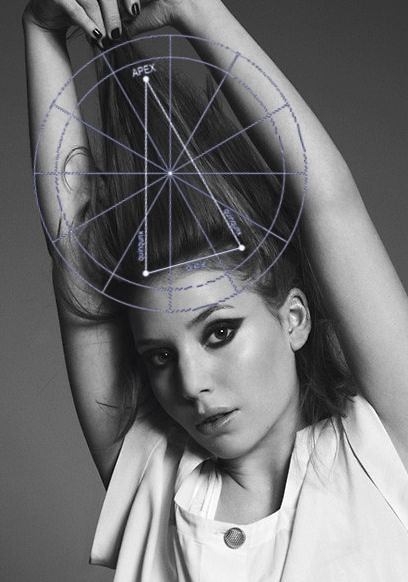
Question: A Transit of Chiron, How Does It Manifest?
 Question: A Transit of Chiron, how does it manifest?
Question: A Transit of Chiron, how does it manifest?
Chiron, in astrological terms, is often referred to as the “Wounded Healer.” It represents a complex archetype that encompasses both the experience of pain and woundedness, as well as the potential for healing and transformation. Chiron’s presence in the natal chart can highlight areas of deep vulnerability and areas where we might feel a sense of chronic pain or inadequacy. The conjunction of Chiron with other planets or sensitive points in the chart can amplify its influence. Chiron with specific planets in the natal chart can give insights into the areas of life where an individual might face chronic challenges or experience a deep sense of woundedness.
Chiron’s association with chronic illness is symbolic of wounds that never fully heal. Individuals with strong Chiron placements might find themselves facing health challenges that persist over time, often defying conventional treatment methods. This can be an incredibly challenging aspect to live with, as it requires coming to terms with ongoing discomfort and limitations. Chiron can symbolize not just physical injuries, but also deep emotional scars that shape an individual’s self-perception and interactions with the world. In cases where these wounds remain unhealed or unaddressed, the pain can be overwhelming and, sadly, might lead to tragic outcomes.
Transits involving Chiron often coincide with periods of introspection and facing one’s vulnerabilities. The “incurable wound” becomes especially relevant during these times. A sudden illness or a sense of life’s unfairness can emerge as the result of a Chiron transit. These experiences can lead individuals to reevaluate their priorities, seek alternative healing modalities, or even engage in deep spiritual and psychological work to find meaning within their challenges. Chiron’s symbolism extends beyond suffering, as it also holds the potential for transformation and healing. Chiron’s energy often encourages individuals to become mentors, healers, or guides for those who are navigating similar struggles.
In summary, Chiron’s presence in the natal chart and its influence through transits can illuminate areas of our lives where we face chronic wounds and vulnerabilities. These wounds might take various forms, from physical illnesses to emotional scars, and they can challenge us to confront our limitations and seek new avenues for healing and growth. While Chiron’s energy can be painful, it also holds the potential for profound transformation and the ability to inspire others through our experiences.

Chiron in astrology is often associated with themes of healing, wounding, and transformation. This celestial body, often referred to as the “Wounded Healer,” can bring both challenges and opportunities for growth in an individual’s life. The view of Chiron can indeed evoke contrasting emotions.
Experiences may involve being continually sick or permanently injured by a seemingly poisonous act of fate, the symbolism of Chiron can reflect a sense of enduring pain and suffering. This portrays Chiron as a harbinger of unfortunate events, leaving an individual in a state of sadness and bleakness. This is representative of the more challenging aspects of Chiron’s influence, where its transits or placements in a birth chart may seem to trigger recurring wounds and deep-seated issues. However, the more positive expression of Chiron lies in the journey of moving beyond this pain and finding a way to rise above the challenges. This suggests that Chiron’s influence can lead to personal growth, spiritual development, and a deeper understanding of oneself. It encourages individuals to explore higher realms of consciousness and seek out paths that lead to a sense of purpose and meaning, even in the face of adversity.
Liz Greene’s observations about Chiron’s transits resonate with the themes of healing and wounding, suggesting that these cosmic alignments might trigger the resurfacing of past hurts and traumas, ultimately leading to a deeper healing process. Greene’s perspective on Chiron aligns with the idea that pain and challenges associated with this celestial body are not without purpose. While acknowledging the difficulty and pain that Chiron can bring, she emphasizes that these experiences are not unproductive. Instead, they offer opportunities for growth, wisdom, and spiritual evolution. This view is a reminder that even in the midst of pain, there can be a silver lining—a chance to emerge stronger and more self-aware.
It’s important to note that Chiron’s influence is complex and multifaceted. While the pain and challenges it represents are undeniable, the healing potential and transformative power it carries are equally significant.
Chiron discovered in 1977, was named after the centaur in Greek Mythology. Too large to be classed as an asteroid and too small for a planet, the new body inspired the term ‘planetoid’ (‘planet-like’). Chiron’s rotational cycle varies from 49 to 51 years; its orbit highly elliptic and connects the orbits of Uranus and Saturn. This astronomical profile has given Chiron the nickname ‘maverick’, meaning ‘outside’ or ‘drop out.’ Many astrologers still dismiss Chiron as irrelevant. Mythological Chiron, an immortal healer, suffered from a fatal wound and could neither live or die. Astrological Chiron is said to describe a physical or psychological ‘wound’ which may be incurable, but can lead to understanding of similar suffering in others. In analogy with its orbit, Chiron is also said to describe the native’s ability to combine traditional Saturnian limitations with the pioneering and rebellious spirit of Uranus. By Astrology – An Illustrated Guide


















 Venus Trine Pluto: Dark Desires
Venus Trine Pluto: Dark Desires
 Mars Conjunct Pluto Synastry
Mars Conjunct Pluto Synastry
 Moon Conjunct Mars Natal Aspect
Moon Conjunct Mars Natal Aspect
 Venus-Pluto Synastry: A Love So Powerful That It Might Just Kill Them
Venus-Pluto Synastry: A Love So Powerful That It Might Just Kill Them
 Sun Square Pluto Synastry: You’ve Got That Power Over Me
Sun Square Pluto Synastry: You’ve Got That Power Over Me
 Saturn in the 1st House: From Self-Doubt to Lasting Identity
Saturn in the 1st House: From Self-Doubt to Lasting Identity
 Reflections on a Past Venus-Pluto Synastry Aspect
Reflections on a Past Venus-Pluto Synastry Aspect
 Venus Trine Mars Synastry
Venus Trine Mars Synastry
 The Scorpio Teenager
The Scorpio Teenager
 Mars in Aquarius: Sex drive
Mars in Aquarius: Sex drive
 Mars-Pluto Synastry: Something Quite Dark and Dangerous
Mars-Pluto Synastry: Something Quite Dark and Dangerous
 The Yod Aspect Pattern: The Mystical Power of the “Finger of Fate”
The Yod Aspect Pattern: The Mystical Power of the “Finger of Fate”
 Sun Square Pluto Natal Aspect: I Am Titanium
Sun Square Pluto Natal Aspect: I Am Titanium
 Moon Conjunct Pluto Synastry
Moon Conjunct Pluto Synastry
 Emotional Understanding: Moon Trine Synastry Aspects Interpreted
Emotional Understanding: Moon Trine Synastry Aspects Interpreted
 Uranus Transits: 1st House: Winds of Change:
Uranus Transits: 1st House: Winds of Change:
 Venus Conjunct Neptune Synastry: Euphoria and the Aftermath
Venus Conjunct Neptune Synastry: Euphoria and the Aftermath
 The Moon: The Goddess of the Night
The Moon: The Goddess of the Night
 Saturn Transits Mars: When the God of Time Meets the God of War
Saturn Transits Mars: When the God of Time Meets the God of War
 Pluto in Libra in the 2nd House: Lessons on Self-Worth and Financial Independence
Pluto in Libra in the 2nd House: Lessons on Self-Worth and Financial Independence